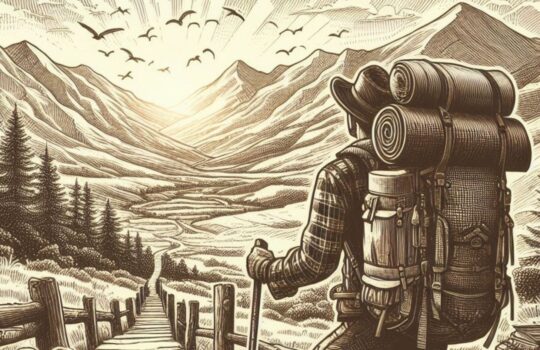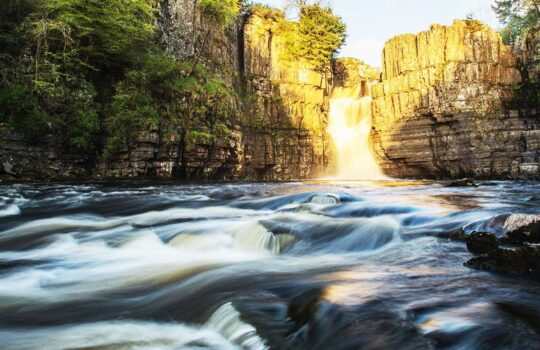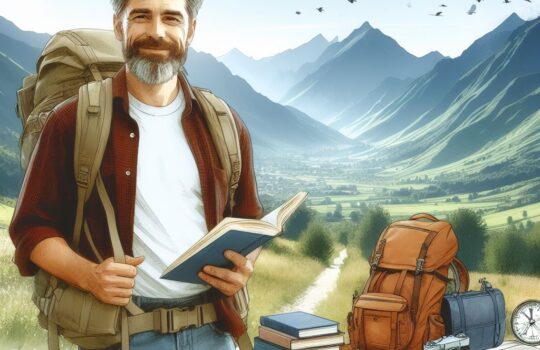I meet (virtually) a lot of people through Instagram.
Mostly, it involves me stumbling across somebody who long-distance walks, or something similar, getting excited and introducing myself, unannounced in their DM’s.
Stephanie Killingbeck-Turner, who is featured in this article is no exception. What prompted me to pop up in her inbox was that I’ve been consuming a lot of content about the environment in recent years.
Haven’t we all? It’s hard not to.
Slogans like, ‘There is no planet B‘, remind you that we are facing an inevitable mess if we don’t play our cards right and take the action needed to curb global warming, which has a huge domino effect on life here on our beautiful planet.
It’s hard not to be scared, especially with all the main media outlets sharing nothing but warnings of untold future horrors.
But what of those who are working hard to make positive change?
That’s where Stephanie comes with her walk from Lands End to John O’Groats while visiting environmental projects along the way, and inspiring us all to be activists and custodians of our planet. I’ll let Stephanie do the talking from here but
Hi Stephanie. It’s great to interview you. So, tell us a bit about yourself, and what inspired you to take on this challenge?
My environmental journey began with a plastic free July challenge in 2016. Over the intervening years my awareness of the climate crisis deepened. I joined local groups, took part in climate protests and gave a number of environmental talks and zero waste workshops. However I kept feeling drawn to greater action and in 2020 I left my job in the museum sector to begin volunteering on an organic farm in Scotland. Whilst this was a fulfilling experience, I came to feel that the actions we take, need to be bigger than the individual. As a keen walker and with the growing belief that community action is key to tackling climate breakdown the idea for this project was born.





Can you give some examples of the environmental projects you are visiting as you walk?
I am visiting a range of projects, some focus on nature and our connection with it, others look at how communities are coming together to tackle the climate crisis and a few offer courses to help people build the skills in this arena. The projects I am visiting include:
- The Eden Project
- Totnes Renewable Energy Society
- The Sustainability Centre
- Knepp Estate
- BedZED
- The Food Rescue Hub
- Ron’s Plot
- Green Meadows
- Incredible Edible
- Fossil Free West Yorkshire
- Transition Stirling
- Findhorn
- Black Isle Brewery garden
- Trees for Life
What do you hope to achieve, in terms of awareness as you do the walk, and share it online and offline?
My main aims for this project are to raise awareness of the climate crisis and to inspire people to get out into nature and to build a relationship with it themselves. A relationship which will lead to a desire to look after and protect the natural world and the knowledge that they can do so through the many fantastic projects that are happening up and down the country.
Initially I thought this would be an online project however something I have really enjoyed is the conversations I’ve had with people along the way. I have had the opportunity to meet and chat with so many different people I would never meet in real life and the encouragement I have had has really spurred me on and made me feel that I am doing something worthwhile.
Have you done anything similar in the past?
I have done some long-distance walking. Each year my mum and I take on a new national trail however the longest we have done to date has been the two weeks of the Coast to Coast Path!
I have also been involved in environmental movements and attended protests but this is the first time I have combined the two.
What kind of preparation has gone into the walk, and what sacrifices have you made to do the walk?
I have a lot of spreadsheets! Initially, I started looking at routes, and then I switched tack to research projects. Once I had decided on the projects I wanted to visit I then looked at how to weave them together. I chose to follow National Trails or walks that already had planned routes and link them together myself.
Knowing I wanted to do a bigger project I had saved up some money, some of which I used to upgrade my gear and treat myself to some ultralight stuff knowing that I would be carrying it for a long time.
I knew that one of the biggest sources of waste on my trip was going to be re-supplying and so I made the decision to dehydrate backpacking meals to take with me. Given the environmental message of this project I wanted to try and be conscious of my own impact as well. It’s also nice to know that I’m getting a nutritious meal in the evening. The dehydrating was quite time consuming and my poor husband is still continuing to dehydrate meals for me in my absence! He sends resupply boxes to me which I collect from the projects I visit along with any maps or anything else I might need for the next stretch of the walk. Of course it is not possible to get everything I need this way and so I am picking up other food on route. Unfortunately a lot of this is in single-use packaging.
I was fortunate that having made the decision during the pandemic to give up my job and to do some volunteering (we have been wwoofing on the Black Isle) I was able to embark on this project relatively easily. The main challenge is being completely self-sufficient for such a long time. I am teaming up with friends and family at some points but of course I do miss them in between.
Where can we follow you and learn more about what you are doing?
You can follow me on Instagram or Facebook. I am posting under Steph’s Environmental Odyssey. I am also filming as I go along and hope to create a small film of the trip once I have completed the challenge. However I will share more about how people can view that via the social media channels once it has been completed.




